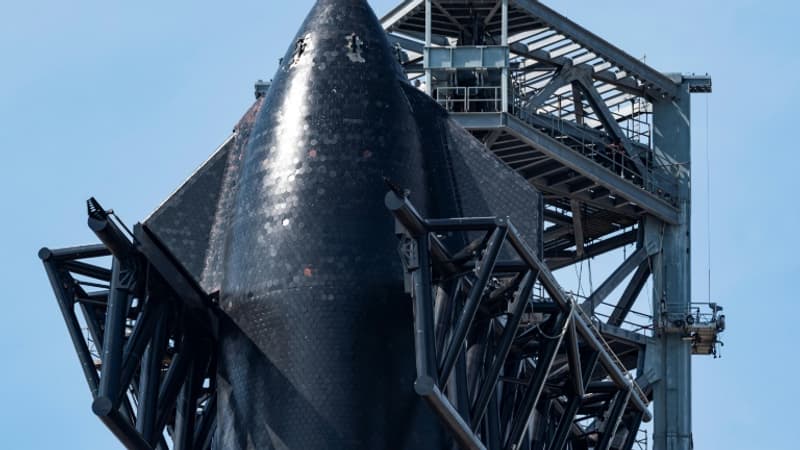An already capital appointment for SpaceX, the company of billionaire Elon Musk. This Monday from the Boca Chica base, in the extreme south of Texas, the first test flight of Starship will take place, the largest and most powerful rocket in the world destined for trips to the Moon and Mars.
From its height of 120 meters, a little more than the second floor of the Eiffel Tower, Starship belongs to the category of super-heavy launchers, capable of transporting more than 100 tons of cargo into orbit. Its takeoff power must be more than double that of the legendary Saturn V, the rocket of the Apollo lunar program (111 meters).
“This is the future of exploration around the Earth, around the Moon and beyond. It’s gigantic,” Gilles Dawidowicz, vice president of the French Astronomical Society, rejoices on BFMTV.
“They will transform things”
This maiden flight will undoubtedly be closely watched by NASA. The US space agency has chosen this spacecraft to send its astronauts to the Moon for the first time in more than half a century, during the Artemis 3 mission officially scheduled for 2025.
In the future, the rocket must be fully reusable. Super Heavy, the rocket’s first stage, will need to return to its launch tower, equipped with arms to catch it.
“If it works, today, or in a few months, or in a few years, because sooner or later they will succeed, they will transform things. Musk is leading three Starship launches a day”, details Gilles Dawidowicz.
The Starship spaceship will have to land on Earth again using retrorockets. It was this maneuver that was attempted several times in 2020 and 2021. Several prototypes descended too fast, hitting the ground in impressive explosions, before one of them finally managed to land.
The idea of a reusable launcher, Elon Musk’s grand strategy, is to lower prices. Each Starship flight could ultimately cost only “a few million” dollars, he said Sunday.
Up to Pluto?
But for Elon Musk, Starship is above all the ship that must allow humanity to become multiplanetary: “We have a hard road of two or three years ahead of us (…) but in the end we should have something that allows us to establish a base in the Moon and on Mars”, explained the billionaire.
To do this, the rocket is equipped with 39 super-powerful Raptor engines, which will come under particular scrutiny during launch on Monday. In February, an impressive test of the 33 Raptor engines of Starship’s first stage, Super Heavy, 69 meters high.
Once this technology is mastered, the Starship rocket could cut space travel times by two or three. “It will take two to three times less time to go around Mars, Saturn or even Pluto,” confirms Gilles Dawidowicz.
This Monday, the flight plan is as follows: approximately three minutes after takeoff, the Super Heavy must take off and fall back into the waters of the Gulf of Mexico. The Starship must then continue its ascent on its own and complete slightly less than a circumnavigation of the Earth before falling back into the Pacific Ocean.
Source: BFM TV


